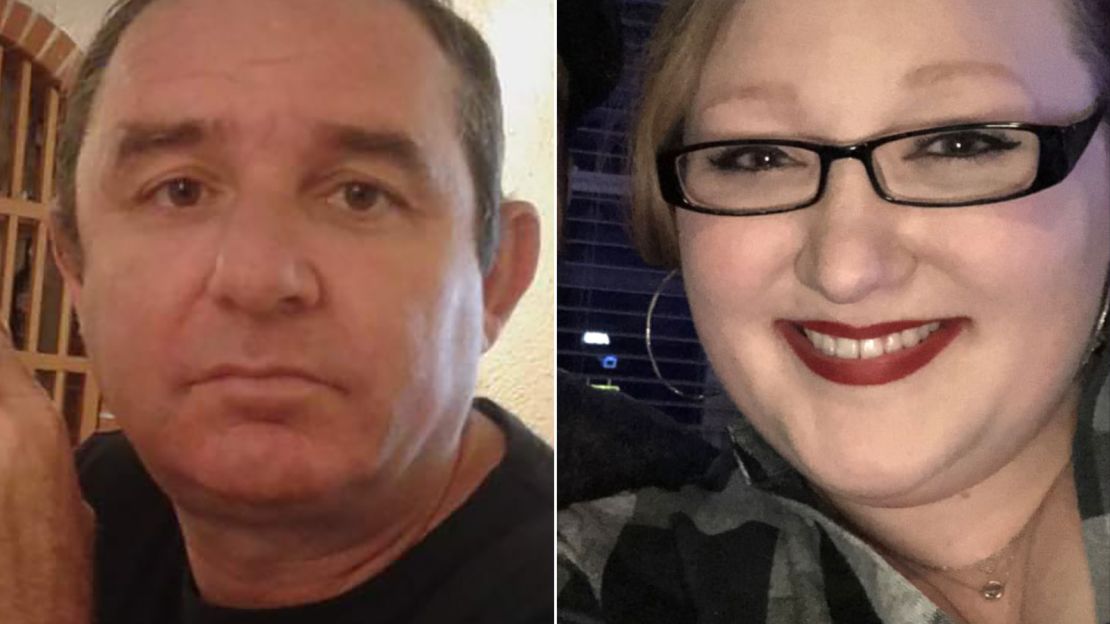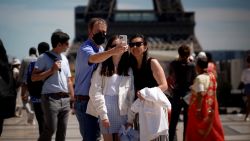Leah Blomberg and Marco Paolone both called an ambulance when their coronavirus symptoms worsened. Both spent time in intensive care, both were unconscious for days, and both were on a ventilator.
They were lucky – they survived a disease which has so far killed more than 230,000 people around the world. But while Blomberg, an American, walked away with medical bills totaling several thousands of dollars, Paolone’s treatment was free. In his home country of Italy, cost isn’t something coronavirus patients need to worry about.
The Covid-19 pandemic is exposing the deep divide between how health care is approached in the US and in Europe. In Italy, like on much of the continent, the system is publicly funded and almost entirely free for anyone who needs it. Meanwhile the United States is the only developed nation without universal health care.
“People do not avoid health care because of cost in Europe,” said Reggie D. Williams II, an international health policy expert at the US-based Commonwealth Fund. “Americans unfortunately face a dual burden of worrying about access to care … and then affordability.”
Health systems everywhere are being stretched by the pandemic. Hundreds of thousands of people around the world suddenly need the same treatment. The problems are similar across the board: inadequate testing capacity, high demand for hospital beds, lack of ventilators, personal protective equipment (PPE) and medical staff.
Health experts say it’s too early to pass final judgments on which countries did well and which failed because the pandemic is far from over. But there are lessons to be learned already.
Rifat Atun, a professor of Global Health Systems at Harvard University in the US, said the evidence so far suggests that more centralized, publicly funded systems with universal coverage and a solid chain of command and control have been weathering the crisis better. They’ve been able to scale up testing faster, coordinate the response, pool resources and reduce death rates.
“The chain is as strong as the weakest link,” he said. “In the US, there isn’t any one health system per se, but multiple systems in each state, and within each state there are different subsystems, so it has been very difficult to have a clever, coordinated response – and that has implications because, you know, viruses don’t recognize borders from one state to another.”
One place, however where the US stands apart from other countries is in how much the pandemic is costing the people infected by the virus.
Counting the cost
Paolone, who is 56 and lives in Monte Silvano in central eastern Italy, called an ambulance last month after experiencing persistent chest pain. He was sent to an emergency room and later diagnosed with Covid-19 – something he did not expect. He found himself in an isolation unit with nurses wrapped head to toe in protective gear that reminded him of spacesuits checking on him through a glass window.
“I had an oxygen mask, but I couldn’t breathe … there was a bell next to my bed and I rang the bell,” he said. He woke up six days later, in a different hospital. “The doctors and nurses applauded when I woke up and they told me I was brought [in] by a helicopter.”
Blomberg’s Covid-19 journey sounds worryingly similar. Days of fatigue and pain, a decision to call an ambulance, a medically induced coma and a ventilator.
Read more:
Both Paolone and Blomberg have a long recovery ahead of them. But unlike Blomberg, Paolone doesn’t have to worry about the cost of the treatment that saved his life. “I didn’t pay for anything. Not a cent,” he said. He doesn’t have private health insurance and is currently unemployed, but that doesn’t affect his access to health care. The Italian system is funded through taxes; primary and inpatient care are free at the point of use for all citizens and permanent residents.
Blomberg, 35, lives in Muskego, Wisconsin. She has lost her job during the pandemic, but has medical insurance through her husband’s employer – unlike the 28 million Americans who, according to the US Census Bureau, were uninsured in 2018. But even with the insurance, the bill she is facing for her Covid-19 treatment is eye-watering.
“The ambulance ride was two grand on its own,” she said.
Blomberg has so far received bills covering only some of her treatment and prescriptions. “They were only for the doctors’ visits for the first few days I was at the hospital and each doctor visit cost me between $300 [and] $400.”
United Healthcare, Blomberg’s insurer, told CNN it was waiving cost-sharing for Covid-19 treatments for its members in Medicare, Medicaid, individual market and certain employer-sponsored health insurance plans. But others who have United Healthcare policies through their jobs may have to pay for their care.
Blomberg hasn’t received any indication that her charges would be waived.
She was too sick to care about the cost of her treatment when calling the ambulance. “My concern was staying alive, it wasn’t the bills,” she said. “I can take the rest of my life paying that back.”

But study after study shows money is a major consideration for many Americans.
According to the Commonwealth Fund, even before the Covid-19 crisis, one in three adults in the US skipped medical care because of the cost, compared to one in 10 in the UK, Germany, Netherlands and Sweden. When the foundation surveyed people in the US about the coronavirus, two-thirds said cost would be a very important factor in their decision to get care if they had symptoms.
Even those who have health insurance may not seek care that quickly, largely because they may face hefty deductibles and out-of-pocket costs for doctors’ visits, emergency room trips and treatment. The roughly 153 million Americans who have coverage through their jobs have to shell out about $1,655 a year, on average, before their coverage kicks in, according to the Kaiser Family Foundation.
“I’m sure cost has been a deterrent to many people accessing services … and in fact, if we look at the US, a large majority of those who are dying are those from underprivileged groups,” Atun said. “This suggests to me that those individuals are typically not accessing services, probably delaying their decisions and presenting late.”
This is a dangerous approach, particularly when dealing with a highly contagious virus. “It makes it very difficult to mitigate and control the pandemic … if people don’t go and have a test, we don’t know whether they are infected and that has implications on policy,” said Liina-Kaisa Tynkkynen, an assistant professor of Health Sciences at Tampere University in Finland.
Since the outbreak began, many major health insurers in the US have said they will waive out-of-pocket costs for many of their policyholders for coronavirus care in hospitals. And the Trump administration said it will reimburse hospitals for treating uninsured coronavirus patients and is requiring hospitals that receive federal aid not to bill patients at higher rates if the hospital or doctors are not in their insurers’ network. Blomberg said that decision leaves people like her wondering whether they would have been better off uninsured.
The US also has other health care flaws that could make it harder to combat the virus. It has fewer practicing physicians per 1,000 people than many developed countries, and it lags behind other wealthy nations in hospitals per million people and hospital beds per capita, according to the Kaiser Family Foundation.
On top of that, health insurance is often tied to Americans’ employment status – which means that some of the 26.5 million people who have filed for unemployment because of this pandemic are also at risk of losing their coverage.
“The crisis underscores the value of having a universal public health system as well as a wider social security system,” Tynkkynen said. “When this sort of crisis happens, it doesn’t only affect people’s health but also their social well-being, their employment, their economic situation,” she added.
The system isn’t starved for money. The US spends nearly 17% of its GDP on health care, roughly twice the average among other developed nations. Yet despite all that money, the US is trailing behind other countries in performance. The Commonwealth Fund has been comparing health care systems in high-income countries for two decades, looking at quality of care, access, administrative efficiency, equity and health outcomes and healthy lives. According to the fund’s Roosa Tikkanen, the US has come last overall in every single one of the fund’s comparison reports.
For many experts, the pandemic lays bare all the reasons for major health reform in the US.
“There is a lot of resources within the health care system in the United States that can be channeled to achieving the goal of universal coverage,” Williams said. “Yes, there are the political barriers. Yes, there are barriers around taxation and trusting government, but I think this pandemic has shown that a lack of universal coverage really allows many people to fall in between the cracks.”
Blomberg said she would prefer a universal coverage system to her private health insurance. “I think it would be much, much better for everybody,” she said, quickly adding that she is pretty certain the system won’t change any time soon. “I don’t see universal health care being an actual option right now,” she said.
“Part of the problem is, you know, the people making these decisions, they don’t have to worry about it. Because they are completely covered under government jobs. They’re making a ridiculous amount of money. And if people aren’t affected by something, then it’s not going to change their opinions on things,” she said.





















